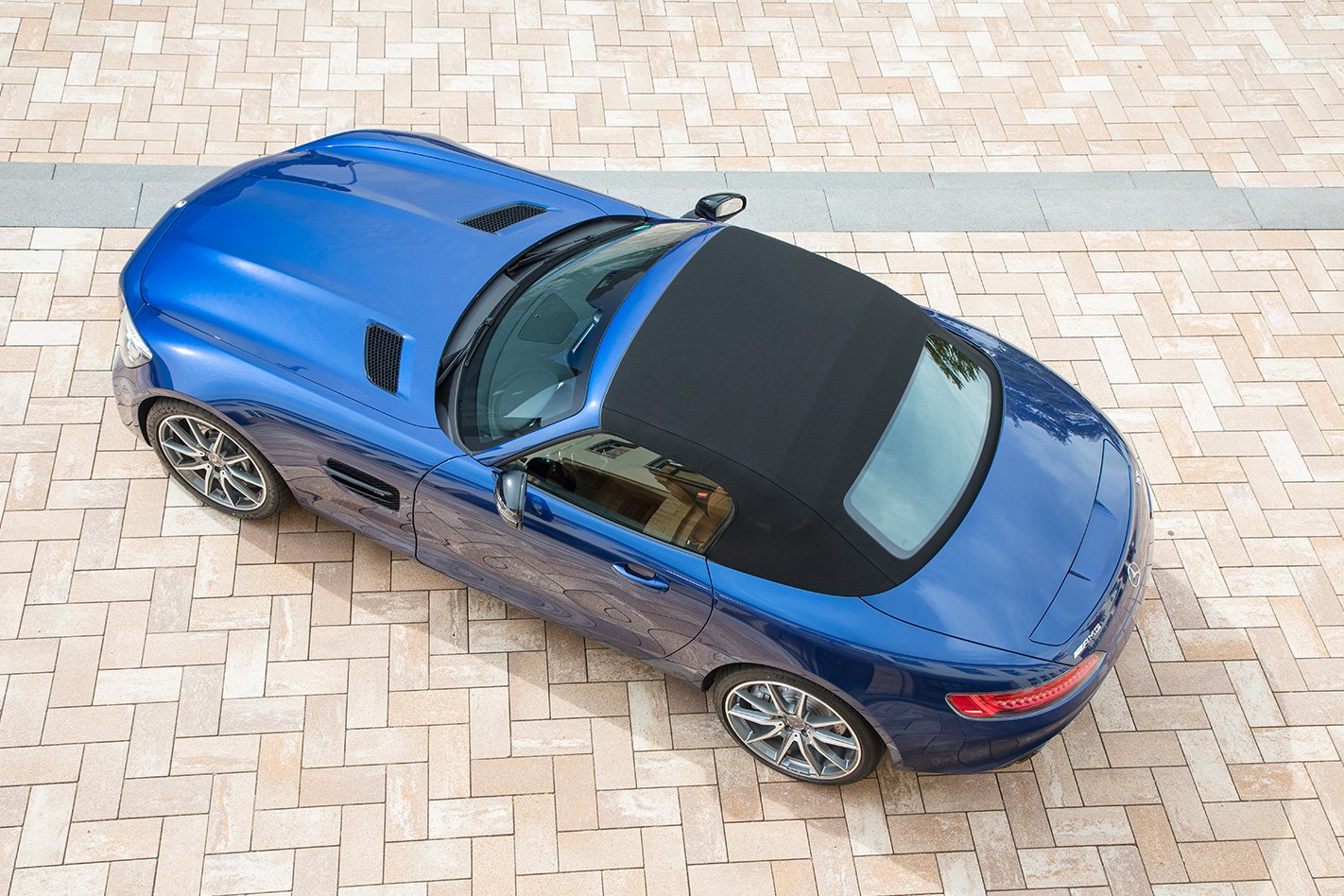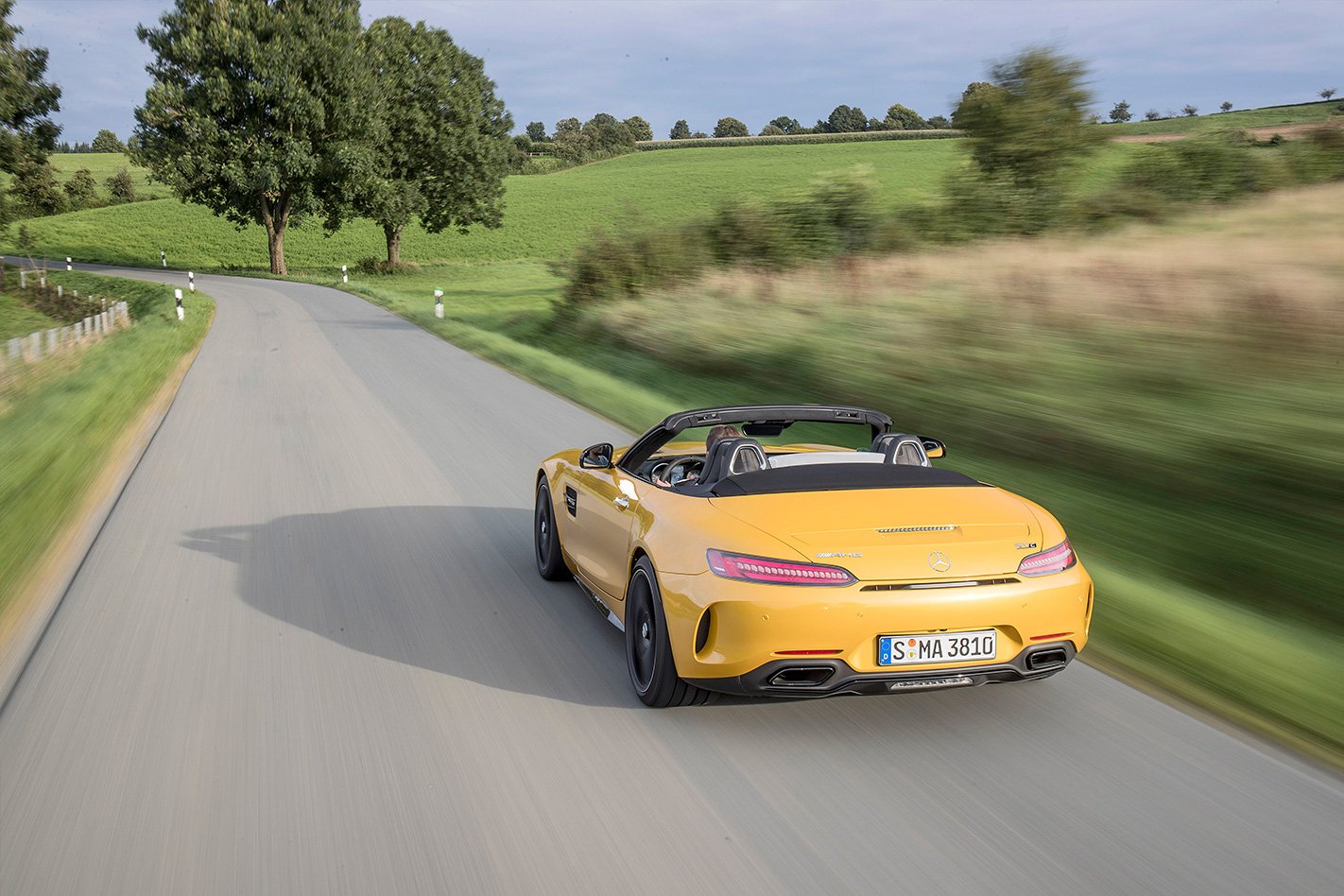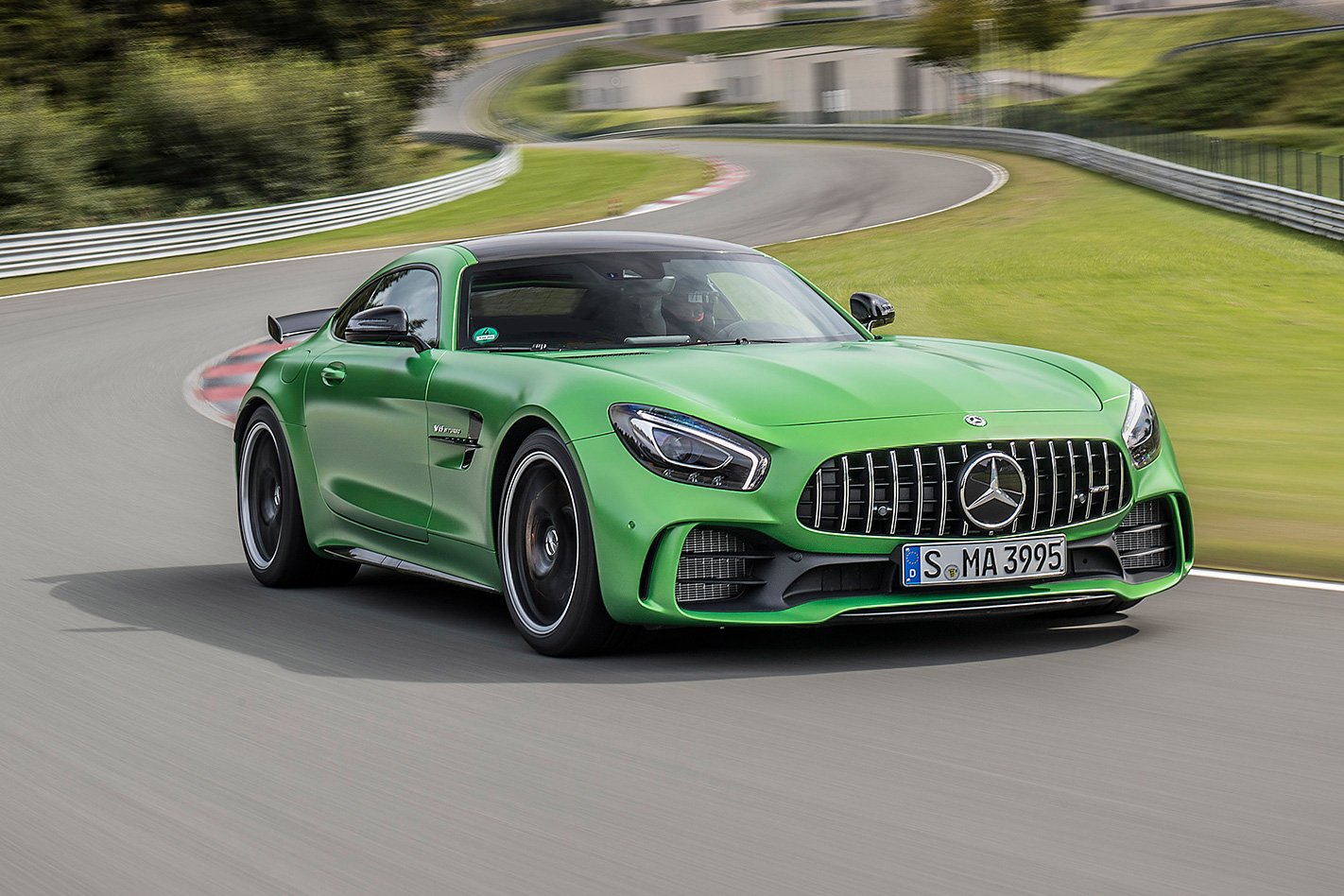FROM a single variant introduced to Australia in mid-2015, AMG’s range of GT two-seat sportscars has grown rapidly to offer six variants in both coupe and convertible bodystyles.
The initial offerings of GT, more potent AMG GT S and track-focused GT R made sense without explanation. As your budget increased, so did power and driving dynamics, but the most recent arrival is not quite as straight forward.

GT Coupe
At $258,711, the AMG GT offers the entry point into the GT family and, like all six options, the most affordable version is powered by a hand-built dry-sump 4.0-litre twin-turbo V8. In the case of this variant, peak power is 350kW at 6000 rpm while maximum torque of 630Nm comes in at 1700 rpm and lasts all the way to 5000 rpm.
It may be the least potent nag in the GT stables, but the base version can still crack 100km/h from a standstill in 4.0 seconds and blast past the 300km/h milestone if you can find a road long enough. Not bad for the entry point representative.
Those imposing looks, massive bonnet, squat purposeful stance and presence are all included with the base GT, and only a trained eye could pick up visual cues that you’ve opted for the least powerful version, including 19-inch wheels in all corners (all others roll on 19-inches at the front but 20-inch at the rear).
For the purist, the GT has simple sports suspension without adaptive systems, while the front brakes are the smallest on offer measuring 360mm, matching the rear rotors.
An AMG Speedshift seven-speed dual clutch transaxle is also common to all variants although higher-performance versions get different gear ratios in first and top gear.
The top of the pack GT R might have a host of weight saving features, but the simple GT is still the lightweight champ of the range weighing in at 1540kg.
GT Roadster
Chopping the GT’s top and replacing the metal roof for a ‘weight optimised’ fabric roof takes the price up to $283,711 and adds 55kg to the kerb weight but that has not dented the performance if the GT roadster.

Some of the weight gain is as a result of extra structural bracing to try and mitigate the detrimental effect on body stiffness that is often the result of a coupe-to-cabriolet conversion. Contrary to the construction of many soft top mechanisms, the GT’s frame is a blend of magnesium, steel and aluminium and actually lowers the Roadster’s centre of gravity when compared to the Coupe.
GT S Coupe
The GT S pioneered the model’s introduction to Australia as the sole offering but since then, the car has been treated to an update which will arrive in Australia in October. When the model launched, it had 375kW and 650Nm but those figures will rise to 384kW and 670Nm for a zero to 100km/h dash in 3.8s and a maximum speed of 310km/h.
With the update, the GT S also gains a new Panamericana grille as do all the versions in the range. Investing the $289,711 for an updated GT S also adds to the GT specification with AMG Ride Control for variable suspension settings, an electronically controlled differential, and larger 390mm front brakes.

GT C Coupe
The addition of a C variant to the GT range may have caused a little confusion. While the variant is available as a convertible version, the C does not denote the cabriolet variant, but instead stands for comfort and this is where the straightforward incremental range deviates.
While the GT C gets another power boost to 410kW and a torque treat of another 10Nm, the newest GT offers a slightly different take on suspension tuning with a more comfort-geared ride.
Ride Control, electronic differential and Race driving mode carry over from the GT S but the GT C offers even quicker acceleration of 3.7s and a top speed of 317km/h.

Interestingly, the GT C engine is the highest revving of the bunch with the V8 turned to offer peak power between 5750 rpm and 6750 rpm, while the GT S and GT R have their peak power at 6250 rpm.
For now, the GT C is only available as a special limited Edition 50 which celebrates a half century of tuned-up AMG cars, which brings a number of bespoke features such as full LED headlights, more luxurious interior treatment and a choice of two unique paint colours for $335,211.
However, Wheels understands that the GT C will be offered in more standard trim when the year is out.
GT C Roadster
Like the GT and GT Roadster, the convertible GT C shares a majority of the equivalent GT C coupe specification including power and torque, and the zero to 100km/h dash. Exceptions include all of the extra Edition 50 gear until the standard GT C Coupe arrives in 2018, when both variants will align in equipment stakes.

GT R
Available only in coupe form for $348,711, the current flagship of the GT range underwent a rigorous weight-reduction and power enhancement program resulting in the ultimate AMG GT for the track.
The combination of 1555kg kerb weight, 430kW and 700Nm allows the GT R to hit 100km/h from zero in 3.6 seconds and a top speed of 318km/h.
The vicious variant also has extra aero added for increased downforce at speed and greater stability as well as carbon ceramic brakes to scrub speed with greater efficiency and consistency.

Unlike the other variants, the GT R also has its torque tube constructed from carbonfibre and its Ride Control suspension is height adjustable.
This is the car that set a new production car lap record at Mount Panorama with a scorching time of 2:16.5.
GT Black
It’s not confirmed just yet, but unofficial murmurings in AMG’s corridors suggest a GT Black is on the cards to farewell the first-gen GT model toward the end of its lifecycle.
If it follows the lead of previous AMG Black vehicles, the GT incarnation will weigh less, pack more of a punch from its 4.0-litre V8 and take the performance figures into even more eye-watering territory.
How much power? With the confirmation of the new Mercedes-AMG S63 coupe we now know the 4.0-litre V8 is capable of a whopping 450kW and 900Nm but the GT’s transaxle may be the limiting factor in the end. Watch this space.







